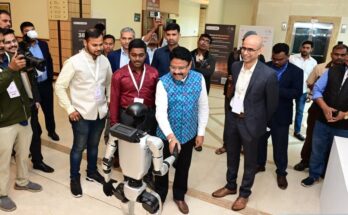By Nishant Arora
New Delhi,The Great Wall has slowly but strategically spread its roots in the Indian IT/technology and allied sectors in India, and there is no stopping the dragon which has only grown fierce — threatening industries after industries across the spectrum as India celebrates its 71th Republic Day.
From smartphones to automobile/electric vehicles, from digital payments and consumer electronics to social media, Chinese companies have created massive ripples in the country in the last couple of years, while American giants like Amazon and Facebook/WhatsApp face the political heat.
China, which is a fastest-growing trillion-dollar economy with a current GDP of $14.14 trillion is on the path to become a $20 trillion economy by 2024 and India is its “sweet spot” — with millions of consumers buying Chinese goods which has decimated domestic players in certain sectors.
Take the case of smartphone industry. According to Hong Kong-based Counterpoint Research, Chinese smartphone brands captured 72 per cent of the market in 2019 compared to 60 per cent a year ago.
Behemoth like the BBK Group (the parent company of OPPO, Vivo, Realme and OnePlus brands) captured 37 per cent market share while Xiaomi (along with Redmi and POCO brands) came second at 28 per cent.
Led by Xiaomi and BBK Group, the Chinese brands have invested heavily in manufacturing devices and accessories in India.
Xiaomi currently has seven smartphone manufacturing plants in India in partnership with Taiwanese multinational electronics company Foxconn and Singapore-based technological manufacturer Flex Ltd.
More than 99 per cent of smartphones that are sold in India are manufactured locally. Across these seven plants, Xiaomi has employed more than 25,000 people.
Xiaomi also locally sources and assembles PCBA (Printed Circuit Board Assembly) in India. It has invested in setting up smart TV manufacturing plant in partnership with Dixon Technologies in Tirupati, Andhra Pradesh. The company last year infused Rs 3,500 crore into its Indian business unit.
Vivo has committed Rs 7,500 crore as part of its India expansion plan while Chinese company TCL is investing Rs 2,200 crore in Tirupati for plants that will produce mobile handsets and TV screens.
Amid the onslaught, where do you see domestic players like Micromax, Intex, Lava and Karbonn (known as ‘MILK’ brand)?
According to Navkendar Singh, Research Director, IDC India, while we cannot rule out any player making a comeback, especially in such a dynamic market like India, it looks nearly impossible for Indian mobile phones brands to win back any relevant portion of the market.
“China-based brands have been in India for almost 5 years plus now. In this time, apart from snatching the market share almost entirely from the other brands, they have gained immense knowledge about the workings of the India market in terms of consumer thinking, preferences, channel dynamics and marketing interventions,” Singh told IANS.
The Chinese brands are continuously committing resources and investments in all these key areas.
“Moreover, with more than 3/4th of the market being with 5 players, it is becoming increasingly challenging for any new or old brands like Indian brands to attempt any sustained comeback,” Singh elaborated.
So what are the options for the Indian smartphone players?
“Indian brands can surely look at the feature phone segment, where almost all major China-based brands have chosen to stay away from (expect Shenzhen-based Transsion Group which is the leader). Also, their brand salience remains strong with that consumer segment and Tier II and III markets,” said the IDC executive.
Cut to the Auto Expo 2020 and you will have a better understanding of how Chinese companies muscle their ways.
Top Chinese firms such as SAIC (owner of MG Motors), BYD (maker of electric buses and batteries), Great Wall (which is the biggest SUV maker in China) and FAW Haima, among others, have reserved nearly 20 per cent space in the annual jamboree of carmakers and industry leaders, at a time when the Indian automobile industry is going through a severe slowdown.
Bucking the slowdown trend, SAIC has recorded healthy sales ever since it launched the Hector SUV. At present, the carmaker’s first offering SUV Hector has an order book of 20,000 bookings. It has till date sold nearly 16,000 units of Hector since its launch in July 2019.
The Chinese automobile major has now launched its first electric offering called ZS EV, at a starting price of Rs 20.88 lakh. The company said that it has secured an overwhelming response for the new-age electric SUV, with over 2,800 bookings in 27 days.
To let its EVs run smoothly in India, MG Motor India is building a five-way EV charging ecosystem in association with major domain players.
China’s leading EV company, Sunra, has expressed interest in setting up a factory in the country as it sees India emerging as the world’s biggest market for electric bikes in the next four to five years.
The EV firm has partnered with 16 private companies in Delhi. Nearly six e-bike models of Sunra are under the Automotive Research Association of India (ARAI) test and two of its models are available in some of the showrooms.
According to a TechSci Research report, electric vehicle market in India is forecast to reach nearly $2 billion by the financial year 2023.
As the Indian government firms up its EV plans, Chinese companies have already set their eyes on the EV sector roadmap in the country.




